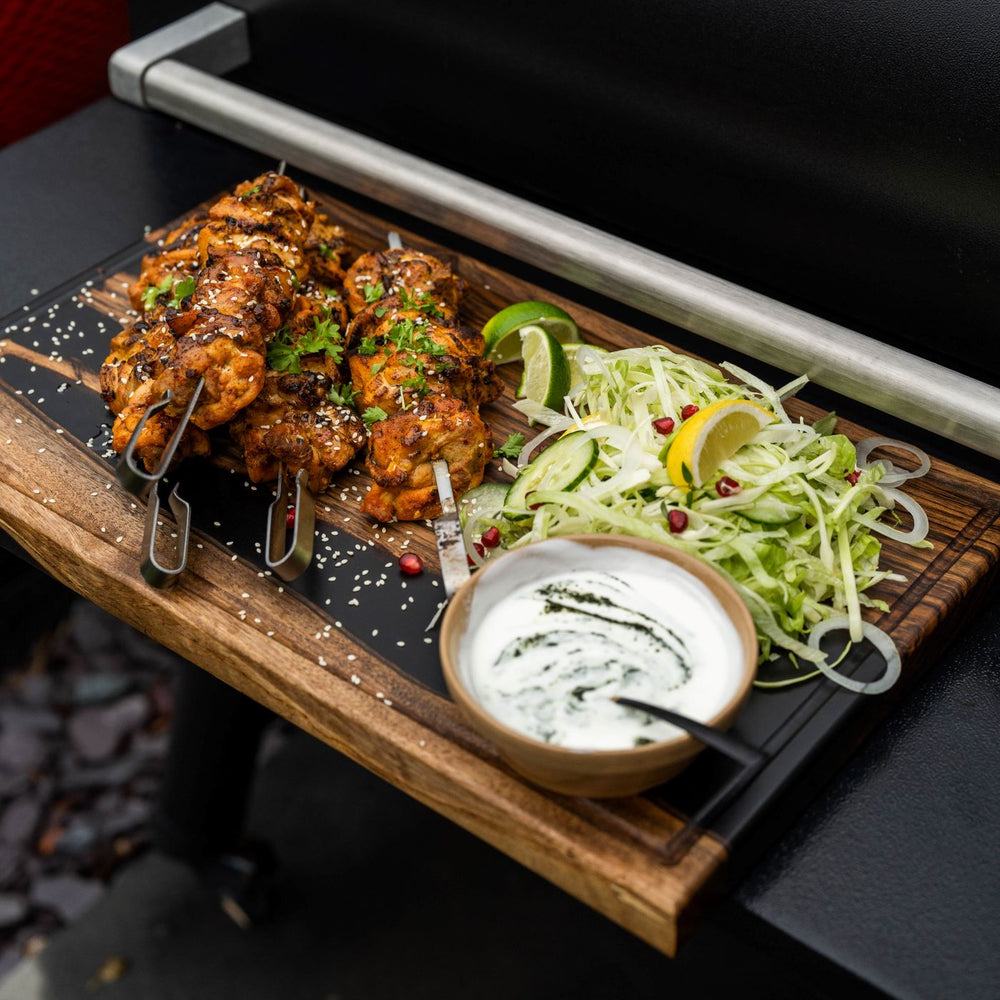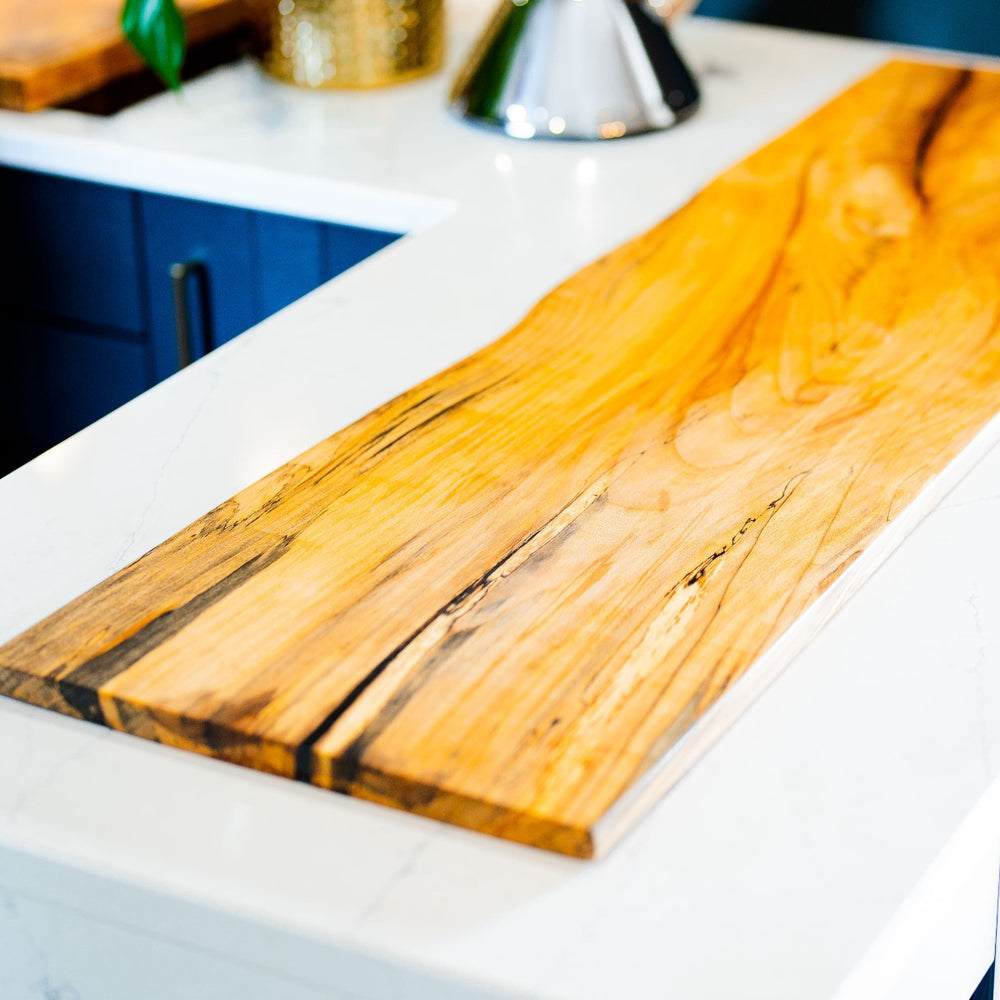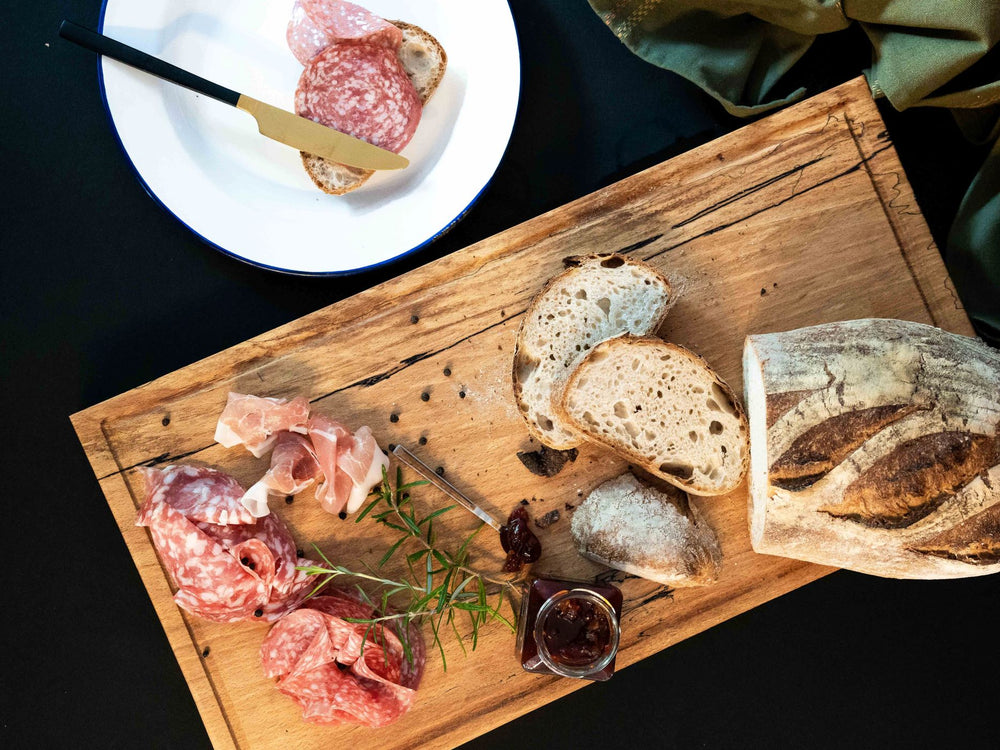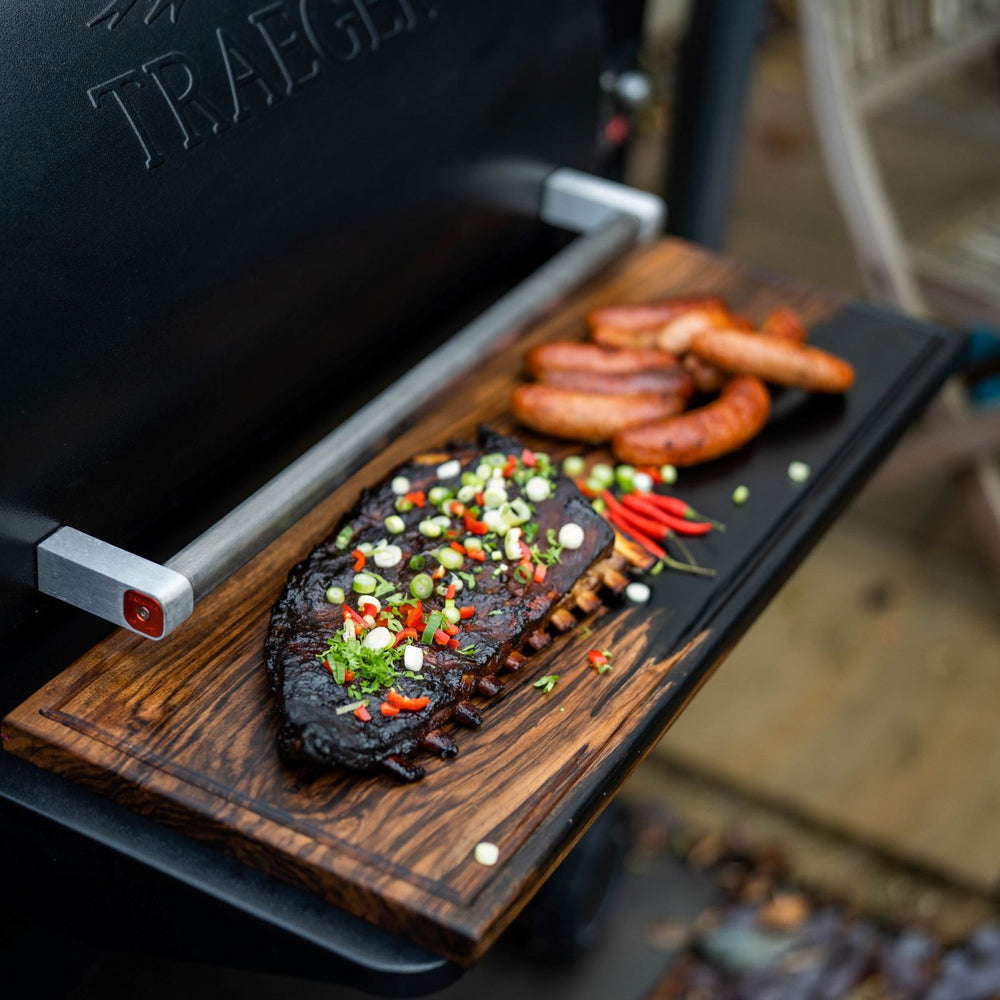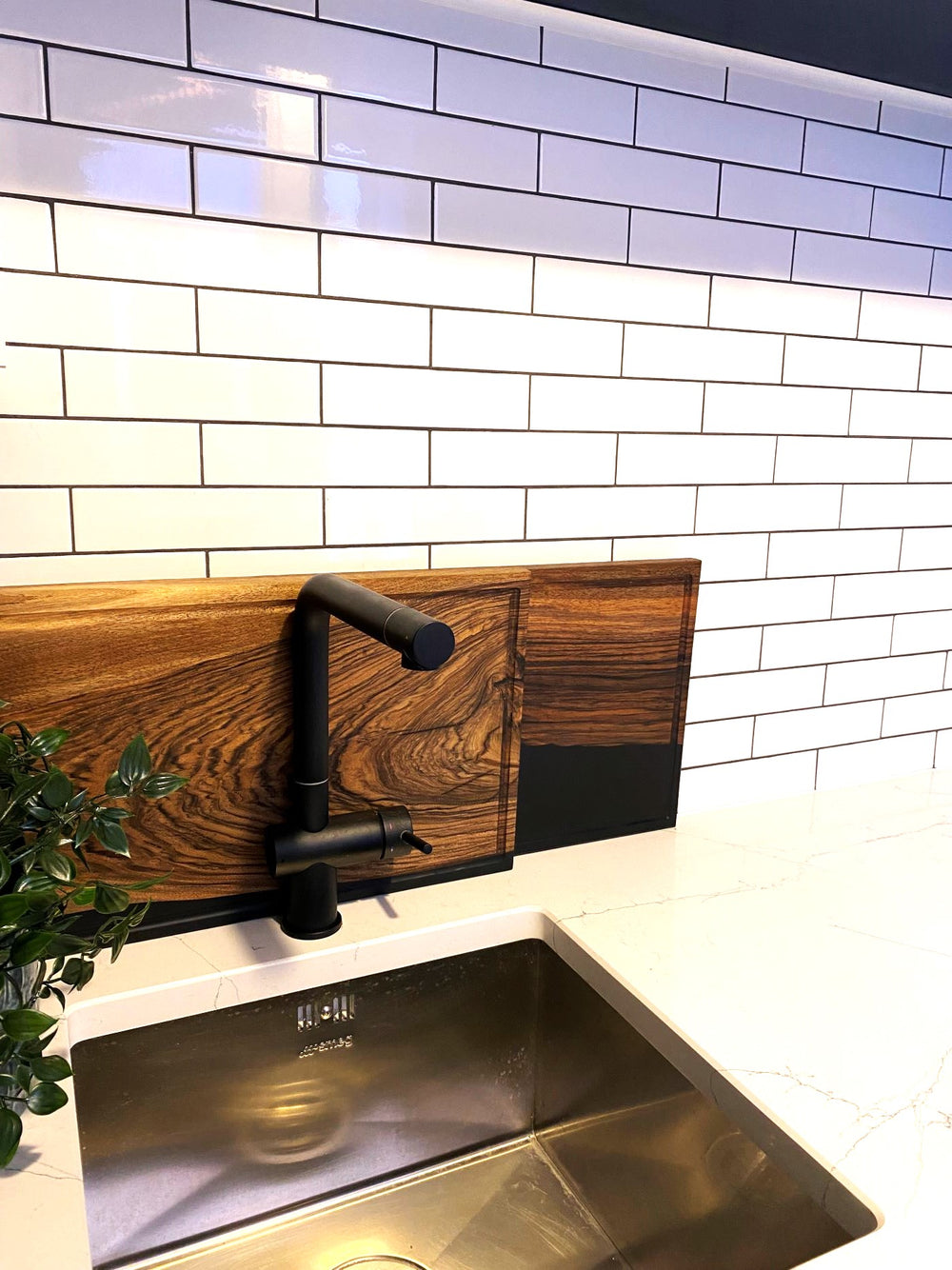Board Care
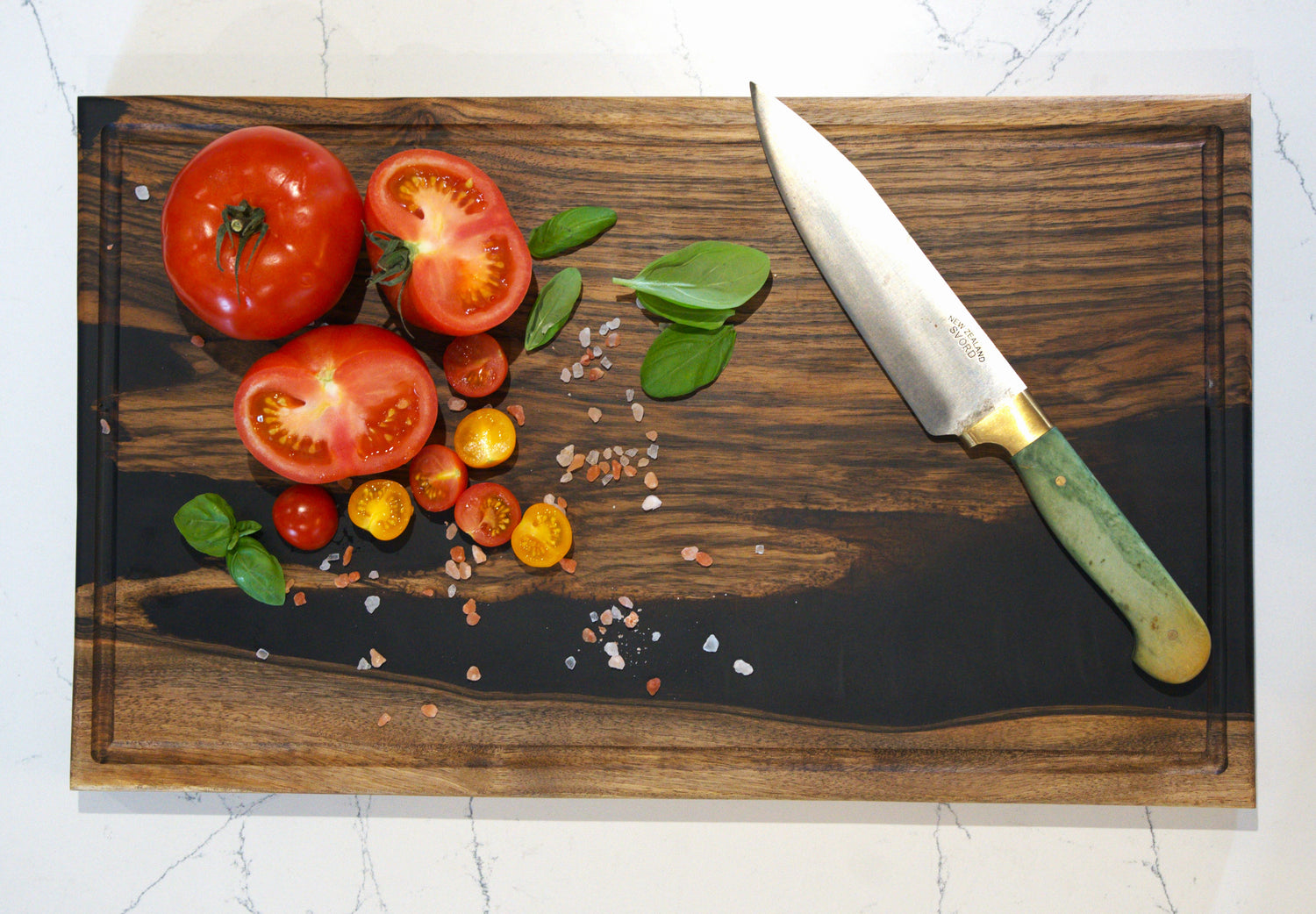
Board Care
Always lightly wipe your board down after each use, using warm soapy water. Then use a damp sponge or cloth to soak up any residual water. It’s important to dry your board properly. If your board has feet, then you can leave it on your worktop as normal, as air can circulate underneath and ensure even drying. If your board doesn’t have feet, you can stand it upright, leaving it to dry fully before putting it back on your counter top. Do not place your board back on your counter top wet, as water trapped on the underside will be absorbed by your board and can cause it to warp.

Do's
- Wipe with a warm damp cloth
- Clean using warm soapy water.
- If your board starts to loose its shine, then its time to oil. Using a clean cloth, rub with a light food grade mineral oil. You can also use coconut board butter if you prefer.
- Scrub with a lemon and coarse salt to remove any stubborn food odours and give your board a deeper clean.

Dont's
- Soak or leave submerged in water
- Microwave.
- Clean with bleach or abrasive chemicals.
- Use standard vegetable based oils such as corn oil, vegetable oil, sesame oil or olive oil to oil your board.
- Clean in a dishwasher.
- Subject to extremes of temperature, such as putting a freshly boiled pan on top.
- Leave for long periods of time in direct sunlight.
Frequently Asked Questions
Can I place hot pans on my board?
You can place warm items on your board, up to 60°C before it starts to denature the integrity of the resin. It is advised you don’t place freshly boiled pans on your board, as this could leave burn marks on the wood or denature the resin.
Can I chop on the board?
Yes, of course you can. The boards are made from natural materials and finished using food safe finishes. Obviously, when you cut on your board it will leave knife marks on both the wood and resin, however this can further add to the character of your board and leaves a story to tell.
Don’t forget, your board can always be refreshed by sanding it down from 120 grit up to 600 grit for the resin and reapply oil, giving your board a new refreshed look.
Does the resin scratch?
Yes, the resin on a chopping board can be susceptible to scratching when you use a knife on it. It's important to use knives with smooth and non-serrated edges to minimize the risk of damaging the resin surface. Additionally, regularly maintaining and caring for your chopping board can help extend its lifespan and preserve its appearance.
What can I use the board for?
You can use the board for various purposes, including chopping, serving, and presenting. It's a versatile kitchen tool that can handle chopping and slicing tasks effectively, while its contemporary design makes it a perfect partner for serving and presenting dishes to enhance your dining experience.
Do you do bespoke options?
Absolutely, we offer bespoke orders and are more than happy to work closely with you to ensure that your chopping board is tailored to your specific preferences. We can help you choose the right type of timber and design elements that suit your needs and style. Our goal is to create a custom board that meets your expectations and brings your vision to life. Please feel free to reach out, and we'll be delighted to discuss the details with you.
Can I choose the wood?
Certainly, you have the option to choose the type of wood for your chopping board. We primarily use English Walnut for the majority of our boards because we find that it beautifully complements the black resin and enhances the unique characteristics of the wood. The fusion between the resin and the heartwood of the tree creates a stunning and harmonious effect. If you have a different wood preference or any specific requirements, please let us know, and we'll be happy to discuss how we can create a board that aligns perfectly with your vision.
What if my board warps?
Wood is a natural product and in a home will have a moisture content of around 10% to 12%. If your board is exposed to an excessive amount of water it can cause it to warp.
Luckily this is fixable If you have a warped board, there are a few methods you can try to fix it. One option is to apply moisture to the concave side of the board, which will cause the fibers to expand and straighten out. You can do this by wiping the the concave side of the board with a very damp cloth and lay your board wet side down on the worktop. Repeat the process if needed until your board is flat.
